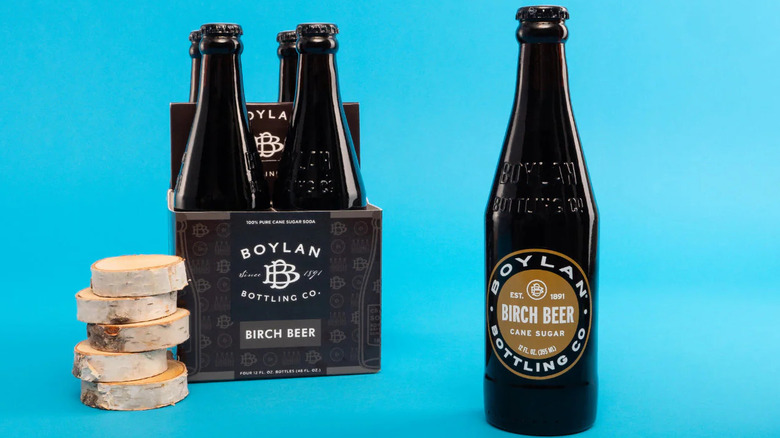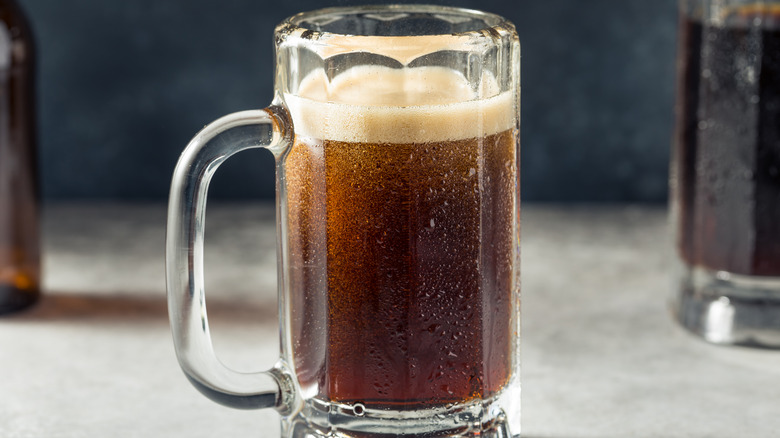Is Birch Beer From Pennsylvania Really Made From Tree Bark?
While root beer is ubiquitous across the country, birch beer is the favored fizzy drink in Pennsylvania. You can think of birch beer as root beer's dad. The name comes from its central ingredient: the bark of the black birch tree, which grows prolifically in the Northeast.
While it's difficult to pinpoint the exact flavor profile of some sodas (Dr Pepper, for instance, contains 23 mystery flavors), birch beer has a love-it-or-hate-it reputation due to birch bark's potent and distinct taste. It's similar to the flavor produced by the leaves of the wintergreen plant, which are notably minty; the taste can be quite overpowering. In contrast, root beer, while it often contains wintergreen, balances the minty character with mellower flavors like vanilla, cinnamon, and molasses. Its profile is still simply more accessible.
For the most part, birch beer is known within the confines of Pennsylvania and neighboring states because of tradition. The producers, often family-run for generations, are primarily located in the Northeast — there are five companies in Pennsylvania alone. Because these companies are small, it's difficult for them to compete with the production, distribution, and advertising power of big-name brands or even prolific craft root beer producers across the country.
The first birch beers were alcoholic
Before birch beer became a soda, it was actually a beer. The main ingredient — birch bark or sap — was thought to have medicinal properties, illustrating how alcohol often straddled the line between medicine and recreation. This was not an uncommon practice. Tonic water, made from the bark of the cinchona tree, contained quinine, which guarded against malaria. The common method of consumption, to make the bitter drink more palatable, was to mix it with gin, creating a classic cocktail: a gin and tonic.
While the gin and tonic's alcohol component was separate from the medicinal quinine, birch beer was boozy from the start. In fact, a recipe for an early alcoholic version can be found in John Mortimer's "The Whole Art of Husbandry" from 1707. It was classified as a small beer due to its low alcohol-by-volume (ABV) of 2 to 3%. In contrast, regular beers run between 4 to 6% alcohol, while today's craft brews across the U.S. and beyond often range from 6 to 10%.
The alcohol-based style of birch beer started to disappear in the 19th century for several reasons. In the mid-1800s, the first soda fountains arrived in the United States. Catering to a newfound interest in health, pharmacists would serve up sodas purported to have medicinal benefits. At the same time, the growing presence of temperance leagues was advocating for abstinence from alcohol. This combination of factors transformed alcoholic birch beer into the bubbly soda that Pennsylvanians know and love today.


